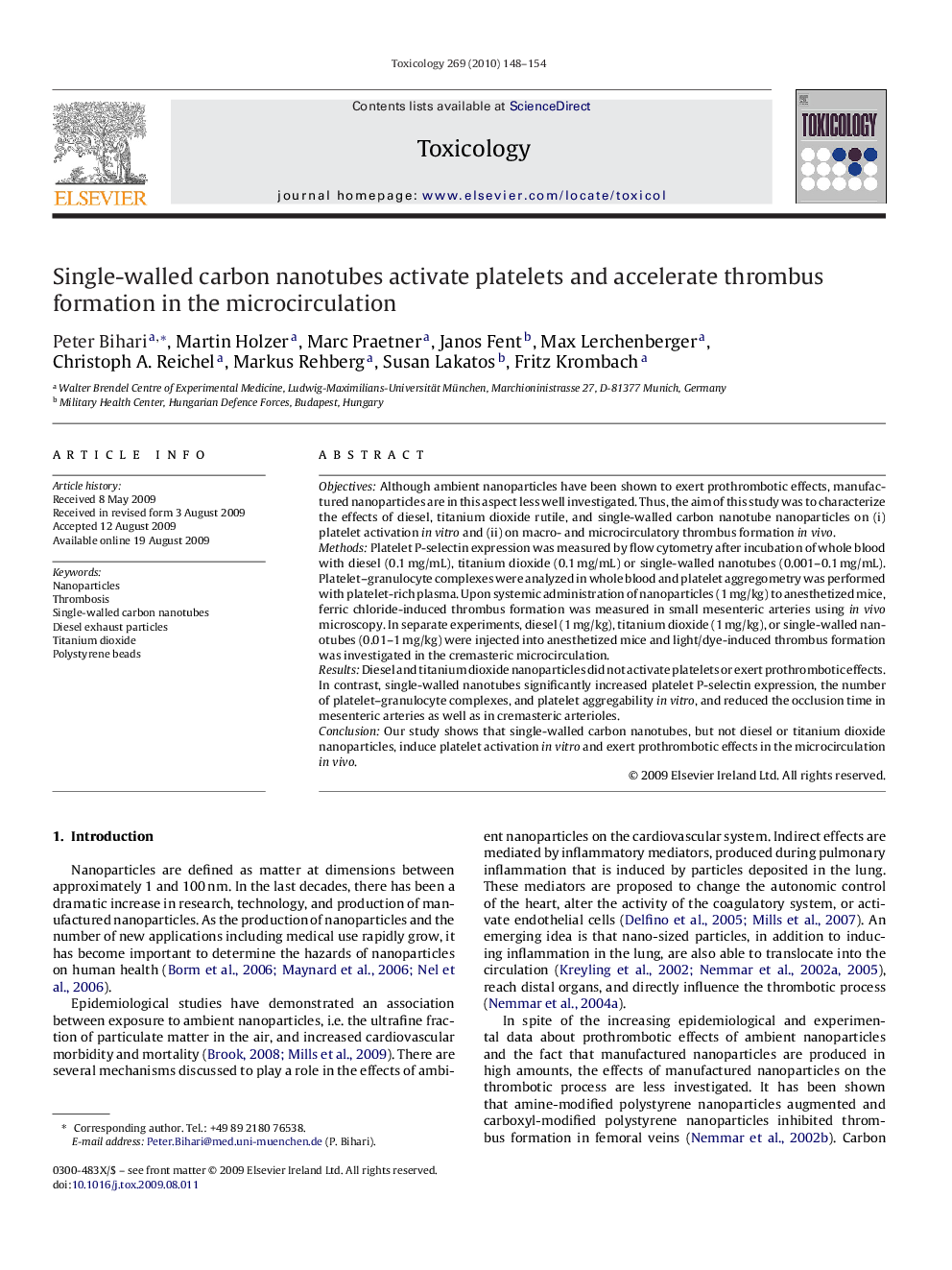| Article ID | Journal | Published Year | Pages | File Type |
|---|---|---|---|---|
| 2596635 | Toxicology | 2010 | 7 Pages |
ObjectivesAlthough ambient nanoparticles have been shown to exert prothrombotic effects, manufactured nanoparticles are in this aspect less well investigated. Thus, the aim of this study was to characterize the effects of diesel, titanium dioxide rutile, and single-walled carbon nanotube nanoparticles on (i) platelet activation in vitro and (ii) on macro- and microcirculatory thrombus formation in vivo.MethodsPlatelet P-selectin expression was measured by flow cytometry after incubation of whole blood with diesel (0.1 mg/mL), titanium dioxide (0.1 mg/mL) or single-walled nanotubes (0.001–0.1 mg/mL). Platelet–granulocyte complexes were analyzed in whole blood and platelet aggregometry was performed with platelet-rich plasma. Upon systemic administration of nanoparticles (1 mg/kg) to anesthetized mice, ferric chloride-induced thrombus formation was measured in small mesenteric arteries using in vivo microscopy. In separate experiments, diesel (1 mg/kg), titanium dioxide (1 mg/kg), or single-walled nanotubes (0.01–1 mg/kg) were injected into anesthetized mice and light/dye-induced thrombus formation was investigated in the cremasteric microcirculation.ResultsDiesel and titanium dioxide nanoparticles did not activate platelets or exert prothrombotic effects. In contrast, single-walled nanotubes significantly increased platelet P-selectin expression, the number of platelet–granulocyte complexes, and platelet aggregability in vitro, and reduced the occlusion time in mesenteric arteries as well as in cremasteric arterioles.ConclusionOur study shows that single-walled carbon nanotubes, but not diesel or titanium dioxide nanoparticles, induce platelet activation in vitro and exert prothrombotic effects in the microcirculation in vivo.
